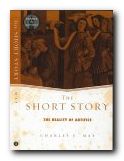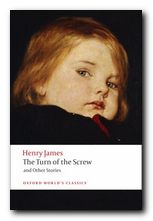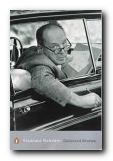the history and development of the short story genre
In this classic study of the short story, Charles May traces its development as a genre from its origins as a Renaissance conte to its maturity in the twentieth century. Of course single episodes extracted from texts as old as the Bible and the Koran might have features in common with the short story, but May identifies Boccaccio and Chaucer in the fourteenth century as the first writers of shorter fiction to move out of the mythic and supernatural towards the realistic mode. He places these at the beginning of a first chapter which provides an overview, from the fourteenth century to the present day.
 This sets out the ground for what follows. The short story as a literary form in its own right really begins in the nineteenth century. I was surprised at the omission of E.T.A.Hoffmann, but he settles quickly into his stride with Gogol, Washington Irving, Nathaniel Hawthorne, and of course Edgar Allan Poe, who both wrote stories and theorised about the form too.
This sets out the ground for what follows. The short story as a literary form in its own right really begins in the nineteenth century. I was surprised at the omission of E.T.A.Hoffmann, but he settles quickly into his stride with Gogol, Washington Irving, Nathaniel Hawthorne, and of course Edgar Allan Poe, who both wrote stories and theorised about the form too.
He offers interesting reasons to support his claim that the short story took off most emphatically in the US (no copyright agreements at the time) but most of his attention is focussed on to a close examination of seminal examples – Nathaniel Hawthorne’s’Young Goodman Brown’, Edgar Allan Poe’s ‘The Fall of the House of Usher’, and Herman Melville’s “Bartelby the Scrivener’ – all of which, as he rightly points out, combine elements of the allegory and an almost supernatural element, along with a realistic surface.
By combining the code-bound conventions of allegory and romance with the contextually based realistic conventions of the novel, Hawthorne creates a story that has both the unity of allegory, held together by a powerful idea and an overall intentional pattern, and the hallucinatory effect of dream reality, made realistic by psychological plausibility and the specificity of concrete detail – all elements of short fiction that have persisted to the present day.
Having established these ground rules, he moves quickly through the rest of the nineteenth century figures who developed the form – Ambrose Bierce, O.Henry, Henry James, and Joseph Conrad – with a very persuasive reading of ‘The Secret Sharer’.
It was Anton Checkhov who is credited with posing the modern alternative to the whiplash ending or the surprise denouement which had been the norm until the end of the nineteenth century (including Guy de Maupassant, who is not mentioned). Checkhov introduced mood, tone, understatement, and careful selection of impressionistic detail as a substitutes for plot and dramatic incident.
James Joyce and Sherwood Anderson seem oddly to bring the century to an end rather than to start a new one – but May’s reading of ‘The Dead’ is exemplary.
Moving into the twentieth century proper, he sees Hemingway as a natural descendant of Checkhov – a creator of dialogue which implies much more than it says on the surface, a master of understatement.
His other central figures of mid-century are writers who I sense are not much read these days – Katherine Anne Porter, William Faulkner, John Cheever, Bernard Malamud, and Eudora Welty. Time will tell if their influence was important or not.
The principal omissions so far as the development of the modern short story is concerned are Virginia Woolf and Nadine Gordimer – but that’s just my opinion.
May comes up to date with a round-up of influential short story writers of the last quarter of a century – Jorge Luis Borges, John Cheever, He makes a particularly large claim for the importance of Raymond Carver.
He ends with a chapter which traces the development of criticism of the short story from Poe to the present. This will be of particular interest to the audience at whom this study is aimed – teachers and students at undergraduate level.
There’s a very useful chronology, giving dates of significant publications, full notes and references. and annotated suggestions for further reading. Despite the obvious US weighting here, for anyone who needs an overview of the short story and an insight into its development as a literary form, this is an excellent place to start.
© Roy Johnson 2002
Charles E. May, The Short Story: the reality of artifice, London: Routledge, 2002, pp.160, ISBN: 041593883X
More on literature
More on the novella
More on literary studies
More on short stories




